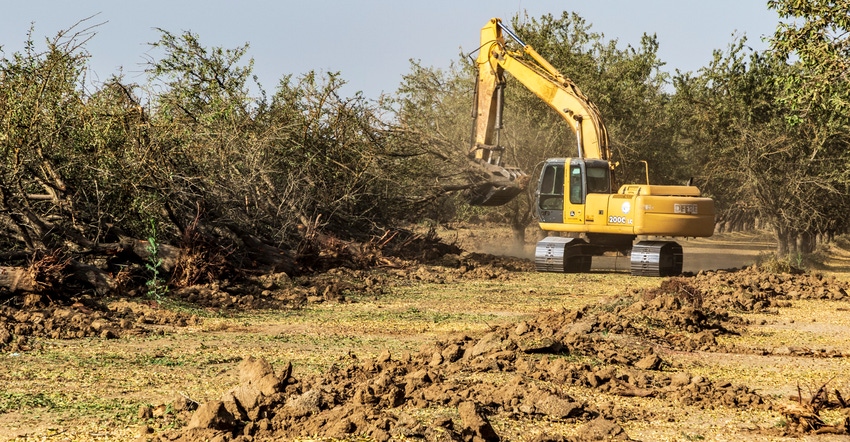
The optimistic subjective almond forecast of 3.2 billion pounds in May wasn't well-received by a California almond industry beset by unprofitable prices. The July 12 U.S. Department of Agriculture announcement that the crop will be closer to 2.8 billion pounds may help matters as one field representative says grower prices were already improving ahead of the announcement.
"When that number popped up there were a lot of cheers going on," said Donny Hicks, field representative with Olam Edible Nuts in Central California.
The USDA's official measurement report of almonds says drought and lack of irrigation water largely factored into the 13% reduction from the subjective prediction in May.
If the prediction holds and California almond farmers harvest 2.8 billion pounds of nuts this summer, it will be second only to last year's 3.115 billion pounds of almonds harvested as the most ever produced by the state's almond industry.
The industry this year is said to have 1.33 million acres of bearing trees ready to harvest, but anecdotal reports challenge that figure as some farmers have no irrigation water, or too little water to finish their crops.
By the numbers
The Nonpareil crop, the popular large kernel variety commonly used in snack nuts, is predicted to be 15% lighter than last year's deliveries of 1.3 billion pounds. The Nonpareil variety represents 39% of the state's almond production.
The average Nonpareil nut set is down 20%. Nut set among other varieties is down 18%. Kernel weight in the Nonpareils is down 6% from the 2020 average and off 3% in the other varieties.
While nut set was far-and-away heaviest in northern California last year, those trees saw nut counts about 50% lighter in the USDA survey that ran from May 26 to June 30. Nuts counts per tree were statistically much closer in the central and southern part of the state this season.
Almond outlook
Kent Stenderup, chairman of the Almond Board of California, the federal marketing order charged with boosting global demand for U.S. almonds, admits this is still "a really large crop," despite the projected downturn from 2020.
Almond Board of California CEO Richard Waycott continues to highlight optimistic numbers surrounding monthly shipments, despite global shipping challenges that constrained U.S. exports.
"Shipment numbers showed that the demand for California almonds continues to increase both in the U.S. and around the world," Waycott said in a prepared statement.
Central Valley almond grower Paul Ewing said export and shipping container concerns still weigh heavily on the industry as harvest season approaches for California's nut crops that include almonds, pistachios, and walnuts.
Water
The big unknown going forward for the California almond industry will be water. Aside from drought and the curtailment of irrigation deliveries to farmers, growers face the permanent loss of irrigation water under the Sustainable Groundwater Management Act, which could force the fallowing of up to one million acres of farmland. While it is unclear which crops will suffer the most, some expect almonds to be high on that list.
A satellite survey of almond acreage across the state suggested just over 1.3 million bearing acres of almonds in April. Some with knowledge of the Land IQ report that surveys almond acreage say it cannot consider orchards that are being readied for removal or were abandoned for lack of water. Because of this, it will take time to see just how long-term drought and irrigation availability will affect the state's largest nut crop.
About the Author(s)
You May Also Like






